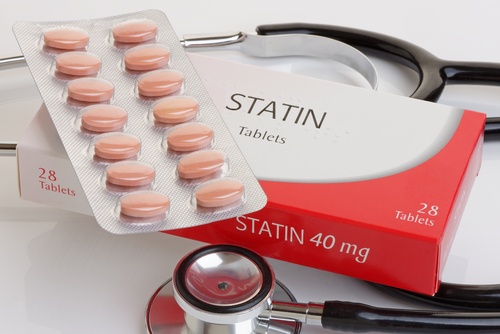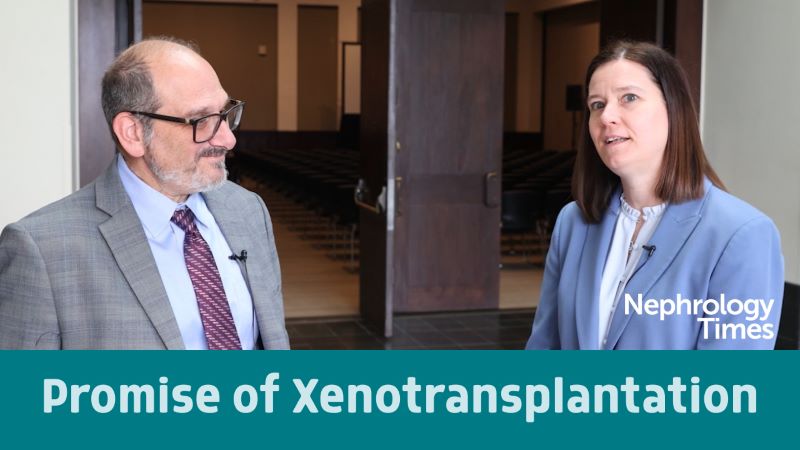
The leading cause of mortality among recipients of kidney allografts with a functioning graft is cardiovascular disease. One-third of hospitalizations among kidney allograft recipients are related to cardiovascular care, leading to high health care costs. Both traditional and nontraditional risk factors are associated with the high incidence of cardiovascular events among kidney allograft recipients, including comorbid hypertension, diabetes mellitus, and dyslipidemia, as well as factors specific to recipients such as oxidative stress, anemia, hyperhomocysteinemia, and effects of immunosuppression therapy.
Dyslipidemia is associated with the combined effects of factors that include posttransplant diabetes mellitus, obesity, impaired renal function, proteinuria, and glucocorticoid administration. At present, there are no established lipid targets for kidney allograft recipients. However, according to Ioannis Bellos, MD, and colleagues, a significant proportion of those patients may be undertreated, not reaching the proposed targets for the general population.
The researchers conducted a systematic review and meta-analysis designed to examine the efficacy and safety of the use of statins among kidney allograft recipients, with particular emphasis on the potential effects of statin therapy on the risk of cardiovascular events, mortality, and graft survival in that patient population. Results were reported in BMC.
The researchers systematically searched Medline (via PubMed), Scopus, Web of Science, CENTRAL (Cochrane Central Register of Controlled Trials), Clinicaltrials.gov, and Google Scholar. All searches were conducted from inception to June 20, 2024. Eligible trials comprised randomized controlled trials and observational studies that evaluated the effects of statin administration after kidney transplant. The maximum likelihood method was used to fit random-effects models, and the certainty of evidence was appraised using the GRADE (Grading of Recommendations, Assessment, Development, and Evaluations) approach.
The primary outcome of interest was the occurrence of major cardiovascular events (MACE). MACE were a composite that could include a combination of cardiovascular mortality, acute coronary syndrome, cerebrovascular accident, peripheral artery disease requiring revascularization, and congestive heart failure. Secondary efficacy endpoints were patient overall survival and kidney allograft survival. Safety endpoints included hepatotoxicity, rhabdomyolysis, creatine kinase elevation, posttransplant diabetes mellitus, cataract, venous thromboembolic events, hip fracture, and cancer.
The initial search located 1,952 electronic articles. After deduplication, 1,068 studies were screened for potential inclusion. After application of inclusion and exclusion criteria, the meta-analysis included 27 studies. Of those, 10 were randomized controlled trials and 17 were observational studies.
Six studies examined the association between statin use and risk of MACE (one randomized controlled trial and five cohort studies). There was an association between the administration of statins and a significantly lower risk of MACE (relative risk [RR], 0.87; 95% CI, 0.67-0.96; 3,621 participants). There was no significant interaction with the type of calcineurin inhibitor, and the meta-analysis outcome was not significantly influenced by study sample size, location, design, or risk of bias. Results of meta-regression analysis did not reveal any significant effects of age, sex, body mass index, estimated glomerular filtration rate (eGFR), history of cardiovascular disease, or diabetes.
Fifteen studies (six randomized controlled trials and nine cohort studies) examined the association between statin use and overall patient survival. There was an association between the administration of statins and a significantly lower risk of overall mortality (RR, 0.84; 95% CI, 0.74-0.94; 70,750 participants). There was no significant influence of calcineurin type, study sample size, location, design, or risk of bias. Results of meta-regression analysis suggested that the association was more pronounced in studies of participants of a younger age and high eGFR on average.
Nine studies assessed graft survival (five randomized controlled trials and four cohort studies). There was no statistically significant difference in the risk of graft loss between the group receiving a statin and the control group (RR, 0.72; 95% CI, 0.48-1.08; 10,255 participants). There were significant differences in the meta-analysis results depending on location and study design: there was an association between statin use and a significantly lower risk of graft loss in studies conducted in Asia and in observational studies.
The risk of liver toxicity was assessed in four randomized studies and two cohort studies. Results of pooled analysis of the study data suggested that there was an association between statin use and a significantly lower risk of liver injury (RR, 0.81; 95% CI, 0.70-0.93; 60,641 participants). The estimate remained statistically significant after the imputation of two potentially missing studies (new RR, 0.80; 95% CI, 0.70-0.93). There was no significant influence by calcineurin inhibitor type, study sample size, location, design, or risk of bias.
Four randomized controlled trials reported the safety endpoint of creatine kinase elevation. The risk was similar between participants treated with a statin and those not treated with a statin (RR, 0.97; 95% CI, 0.50-1.89). There was no difference in the outcome among participants treated with cyclosporine and tacrolimus, and the result was not significantly affected by sample size, location, design, or risk of bias.
Two studies assessed the potential link between statin use and rhabdomyolysis (one randomized controlled trial and one retrospective cohort study). There was a significantly greater risk of rhabdomyolysis associated with statin use (RR, 1.37; 95% CI, 1.10-1.70). There was no significant influence on the findings by study sample size, location, design, or risk of bias.
One retrospective cohort study evaluated the risk of cataract among kidney allograft recipients treated with a statin. There was an increased risk of cataract associated with statin use (RR, 1.22; 95% CI, 1.14-1.31).
There were no statistically significant differences between those receiving a statin and those not treated with a statin in the risk of posttransplant diabetes mellitus, hip fracture, venous thromboembolism, or cancer.
Limitations to the study findings cited by the authors included the limited availability of data regarding the potential differential statin effects among participants treated with cyclosporine or tacrolimus; only a few patients were treated with mammalian target of rapamycin (mTOR) inhibitors. In addition, the included studies did not consistently report statin dosing.
In summary, the researchers said, “Among kidney transplant recipients, statin therapy is associated with significant benefits in terms of cardiovascular event reduction and survival improvement. Statin administration is well-tolerated, being associated with minor increases in the risk of rhabdomyolysis and cataract. Further research in large scale is needed to establish the favorable cardiovascular effects of statins and determine the subpopulation of kidney transplant recipients that may be safety targeted for higher-intensity statin treatment.”
Source: BMC






 © 2025 Mashup Media, LLC, a Formedics Property. All Rights Reserved.
© 2025 Mashup Media, LLC, a Formedics Property. All Rights Reserved.